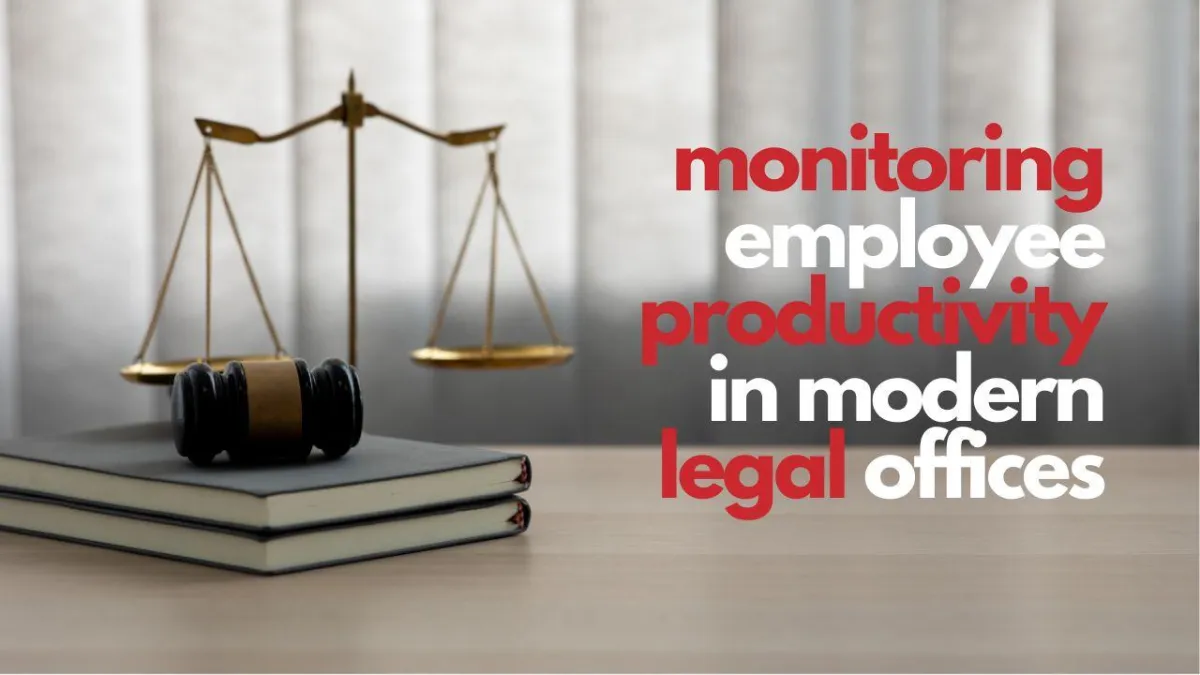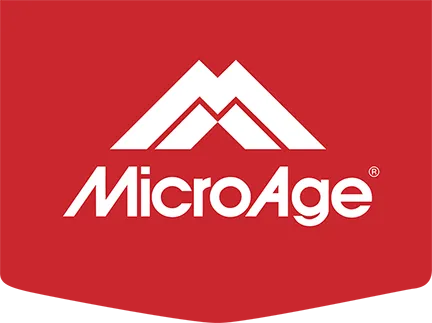LATEST
NEWS

Monitoring Employee Productivity in Legal Offices
Dream big, but let's ground our dreams in reality—a workplace utopia where every team member consistently fires on all cylinders is, frankly, a myth. But what's not mythical is the transformative power of crystal-clear Key Performance Indicators, rock-solid expectations, and non-negotiable accountability. These are the compasses that provide your workforce with the necessary navigation to chart their course to success!
Boost efficiency at your law firm, notary public, or other legal office and safeguard its confidential data with vigilant monitoring—not merely for productivity's sake, but to tackle the oft-overlooked cybersecurity threats lurking within. Remember, the majority of digital risks stem from innocent employee mishaps, not malice. By implementing robust procedures to log and regulate staff interactions with sensitive information, you'll be one step ahead in identifying vulnerabilities and fortifying your defenses against potential cyber onslaughts.
Should You Invest in Employee Monitoring?
This isn’t a one-size-fits-all question. Some companies do well with different types of monitoring. For larger enterprises, a data environment that allows your team to grant authority, or access, based on the employee’s needs for certain data can be an excellent benefit. It’s unobtrusive but serves to log all access and changes to documentation, which provides exactly what you need to delineate responsibility.
For smaller companies, there are many types of software that are developed specifically to monitor employee use. Some of these options take screenshots and even use the webcam to take images. As you might imagine, some of these options can seem off-putting to employees. For most companies, it can be an excellent idea to discuss these monitoring options internally and to get a good understanding of how staff members feel about them. You don’t want to increase employee turnover rates in your quest to improve productivity. A staff that’s happy often works much harder and is more productive, so there is a balance in this decision-making process.
However, with that caveat in place, there are many monitoring options that are unobtrusive and excellent to help with productivity and cybersecurity.
Types of Employee Monitoring
Many of the software and tools you currently use do allow some level of oversight. If your employee is in your company’s database, you should be able to log who they are and what they’re accessing. There are also many tools available. Here, we’ll discuss a few options.
Microsoft Teams. Microsoft Teams is an excellent organizational tool. It wasn’t developed to monitor activity, but you can use the features to do just that. The Microsoft usage reports and teams reports can help you form a good picture of productivity and use within the Teams environment.
Monitoring Software. There are many types of monitoring software available, such as Teramind. Employers are not the only ones using monitoring software. As schools and Universities went online for the pandemic, many made monitoring software mandatory for students, as well. Each of the offerings is slightly different, but most of these applications are installed on the device, and they record information. This might include recording what tabs are open, what pages the user is looking at, monitoring keystrokes, and even turning on the camera to take video and still-frame images. Many of these options also allow you to retrieve screenshots.
Phone Monitoring. Phone monitoring can be an excellent addition because it allows you to collect and use data that would otherwise be lost if the employee didn’t note it anywhere in the customer’s files. Many VoIP systems have extensive reporting options to help you collect data through this communication method.
Microsoft 365 Reporting. There are many reports that could be helpful for the employee and employer including:
Email Activity by User
Contacts Activity
Calendar Log Events and many others
Conclusion
While there is specific software that can show you exactly how productive a user is being, there are also many options within the tools you’re currently using. Identifying number of calls, hours of productive work, and scorecards are all easy and included components of tools you’re already using!
Implementing a more comprehensive employee monitoring system is also a possibility. However, it would be best to identify the potential impact on company culture before doing so.
Our expert advice? Zero in on fostering expectations and accountability rather than just rolling out new software. But, as your trusty IT provider, it's our duty to clue you in on the fact that such tech solutions are out there – and they demand oversight by a savvy technical crew.
If you have any questions on using your IT systems to assist with employee productivity monitoring, please let us know. We’re here to help!

Monitoring Employee Productivity in Legal Offices
Dream big, but let's ground our dreams in reality—a workplace utopia where every team member consistently fires on all cylinders is, frankly, a myth. But what's not mythical is the transformative power of crystal-clear Key Performance Indicators, rock-solid expectations, and non-negotiable accountability. These are the compasses that provide your workforce with the necessary navigation to chart their course to success!
Boost efficiency at your law firm, notary public, or other legal office and safeguard its confidential data with vigilant monitoring—not merely for productivity's sake, but to tackle the oft-overlooked cybersecurity threats lurking within. Remember, the majority of digital risks stem from innocent employee mishaps, not malice. By implementing robust procedures to log and regulate staff interactions with sensitive information, you'll be one step ahead in identifying vulnerabilities and fortifying your defenses against potential cyber onslaughts.
Should You Invest in Employee Monitoring?
This isn’t a one-size-fits-all question. Some companies do well with different types of monitoring. For larger enterprises, a data environment that allows your team to grant authority, or access, based on the employee’s needs for certain data can be an excellent benefit. It’s unobtrusive but serves to log all access and changes to documentation, which provides exactly what you need to delineate responsibility.
For smaller companies, there are many types of software that are developed specifically to monitor employee use. Some of these options take screenshots and even use the webcam to take images. As you might imagine, some of these options can seem off-putting to employees. For most companies, it can be an excellent idea to discuss these monitoring options internally and to get a good understanding of how staff members feel about them. You don’t want to increase employee turnover rates in your quest to improve productivity. A staff that’s happy often works much harder and is more productive, so there is a balance in this decision-making process.
However, with that caveat in place, there are many monitoring options that are unobtrusive and excellent to help with productivity and cybersecurity.
Types of Employee Monitoring
Many of the software and tools you currently use do allow some level of oversight. If your employee is in your company’s database, you should be able to log who they are and what they’re accessing. There are also many tools available. Here, we’ll discuss a few options.
Microsoft Teams. Microsoft Teams is an excellent organizational tool. It wasn’t developed to monitor activity, but you can use the features to do just that. The Microsoft usage reports and teams reports can help you form a good picture of productivity and use within the Teams environment.
Monitoring Software. There are many types of monitoring software available, such as Teramind. Employers are not the only ones using monitoring software. As schools and Universities went online for the pandemic, many made monitoring software mandatory for students, as well. Each of the offerings is slightly different, but most of these applications are installed on the device, and they record information. This might include recording what tabs are open, what pages the user is looking at, monitoring keystrokes, and even turning on the camera to take video and still-frame images. Many of these options also allow you to retrieve screenshots.
Phone Monitoring. Phone monitoring can be an excellent addition because it allows you to collect and use data that would otherwise be lost if the employee didn’t note it anywhere in the customer’s files. Many VoIP systems have extensive reporting options to help you collect data through this communication method.
Microsoft 365 Reporting. There are many reports that could be helpful for the employee and employer including:
Email Activity by User
Contacts Activity
Calendar Log Events and many others
Conclusion
While there is specific software that can show you exactly how productive a user is being, there are also many options within the tools you’re currently using. Identifying number of calls, hours of productive work, and scorecards are all easy and included components of tools you’re already using!
Implementing a more comprehensive employee monitoring system is also a possibility. However, it would be best to identify the potential impact on company culture before doing so.
Our expert advice? Zero in on fostering expectations and accountability rather than just rolling out new software. But, as your trusty IT provider, it's our duty to clue you in on the fact that such tech solutions are out there – and they demand oversight by a savvy technical crew.
If you have any questions on using your IT systems to assist with employee productivity monitoring, please let us know. We’re here to help!
Get the most from your IT
As service providers to more than 300 companies, the dedicated professionals at MicroAge are second to none when it comes to managed services. By improving efficiency, cutting costs and reducing downtime, we can help you achieve your business goals!
Blog post categories
Contact Us
CHILLIWACK
As service providers to more than 300 companies, the dedicated professionals at MicroAge are second to none when it comes to managed services. By improving efficiency, cutting costs and reducing downtime, we can help you achieve your business goals!
1-844-773-5753
#203 - 46167 Yale Rd, Chilliwack, BC Canada V2P 2P2
Monday - Friday, 8:00 am - 5:00 pm

Contact Us
1-844-773-6788
#200 - 45896 Alexander Ave, Chilliwack, BC, Canada V2P 1L5
Monday - Friday, 8:00 am - 5:00 pm
© Copyright 2023. MicroAge Chilliwack. All rights reserved.